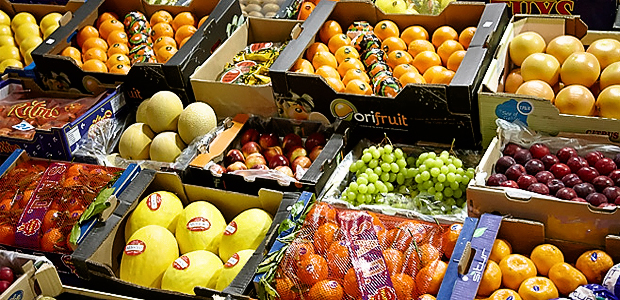
Program That Provides Affordable Fresh Fruits And Vegetables Expanding To Grocery Stores
The Double Up Food Bucks program makes locally produced fresh vegetables and fruits more affordable for low income families in St. Louis, and it is planning to be expanded into area grocery stores. The program matches up to $25 EBT dollars that people on food stamps spend on locally produced fruits and vegetables. This allows people to purchase healthier choices. To find stores in the area, St. Louis SNAP Retailers.
“Lots of times, they are kind of like, ‘What’s the catch? You’re giving away free money?' But, yes, we are giving away free money because we want more people to eat more fruits and vegetables,” said Program Manager for the St. Louis area Brian DeSmet.
Currently The Double Up Food Bucks program is available at just a handful of farmer markets in the area, but this summer it will run at the Tower Grove, North City, DeSoto, Salem and Webster Groves farmers markets along with some out of state areas. But the goal now is to make this program available at local grocery stores. DeSmet is said to be working to implement it at stores like Local Harvest and the mobile St. Louis Metro Market later this summer, and bring it into at least to the five area Schnuck's stores by next year.
“We’re excited to partner with the mobile market that comes to different areas but is focused around the JeffVanderLou neighborhood, because that will help us reach some people that aren’t going to be able to get to a farmer’s market or don’t have a farmer’s market right in their area,” he said.
At these locations, the program will work just a little differently. Customers can buy up to $25 of locally grown produce using money from their EBT cards and they will get a matching amount for vegetables and fruits produced anywhere. “It helps not only low-income shoppers, but also helps our local farmers, and keeps more money in the local economy,” DeSmet said. “It’s a triple win.”
“We only had about a $3,000 budget for the whole season and no marketing budget. It was all done by word of mouth and social media,” he said. “Some markets did get some usage, but some didn’t have a lot.”
“This year, we’re working with the East-West Gateway Council of Governments; they are helping us to do outreach and GIS mapping of organizations near the farmer’s markets and grocery stores to help us get the word out to EBT recipients,” he said. “There will be a lot more of that kind of stuff going on this year that we didn’t really have the ability to do last year.”
“We’re just hoping we can use the community networks around to get the word out so people are actually using this, because we have the money,” he added.
Funding for the expansion of this program in Missouri and Kansas will be from a $2.9 million FINI grant given to the Mid-America Regional Council; which matches public and private funding, which brings the total amount to $5.8 million.
For the St. Louis area, that means a $50,000 budget just for current and potential farmer’s markets programs and reaching thousands of people, versus hundreds, DeSmet said.
-
Using Food Stamps Online
With today's technology online grocery stores can now bring groceries right to your front door. B... Read Post »
-
Louisiana SNAP Work Program Starts
In Louisiana they are beginning to implement a food stamp work program that starts July 1st. This... Read Post »
-
Idaho Changes EBT Refill Date
As of July 2016 Idaho has changed the food stamp payment dates for SNAP recipients. Prior to July... Read Post »
-
Possible Law Changes For SNAP Retailers
The United States Department of Agriculture (USDA) is looking to change laws with regards to the ... Read Post »
-
New Work Requirements For SNAP In NC
Starting next week thousands of food stamp recipients across North Carolina are at risk of losing... Read Post »
